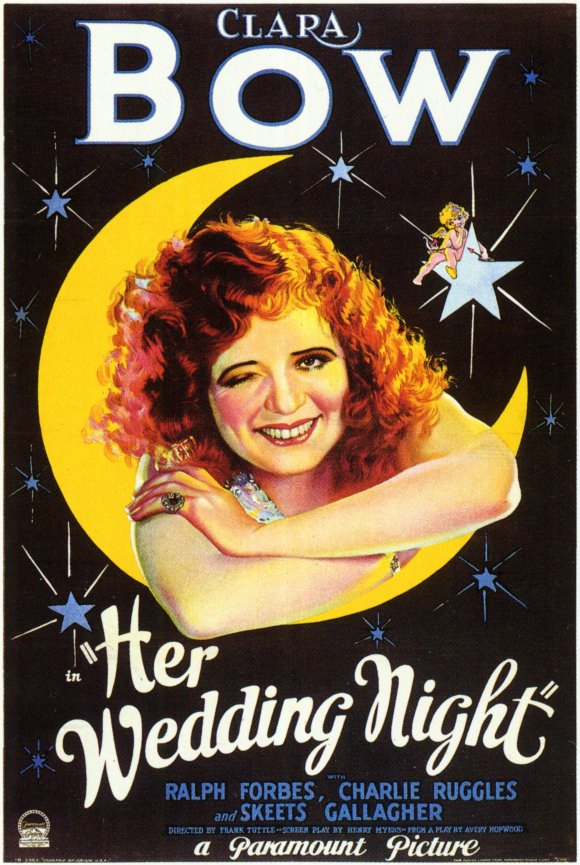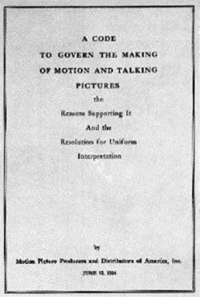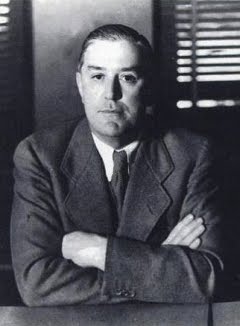What is pre-Code Hollywood? The quickest definition is this: “pre-Code” refers to an era in motion pictures from the arrival of sound (aka ‘talkies’) in 1927 to the mandatory enforcement of the Motion Picture Production Code in July 1934. This era is notable for while being censored, it is not as severely censored as the films that follow that July 1934 date.
The fascination with pre-Code films often comes from how openly suggestive and fun the majority of films that compromised those seven years are. Sex, drugs, miscegenation, portrayals of homosexuality, and a host of other issues that would be banned from public consumption for several decades are indulged in and exploited frequently by then-big Hollywood studios. Films could be exploitative and lurid or sophisticated and adult.
What led to pre-Code Hollywood?
Since motion pictures were created in the late 19th century, they touched on a wide variety of topics, including many illicit or controversial subject matters. Hollywood grew as a capital of motion picture production, and as the bankrolls expanded, so did the scandals. The trial of Roscoe “Fatty” Arbuckle for rape in the early 1920s was a turning point and set off a large boycott of motion pictures and helped solidify Hollywood as a den of vice and immorality.

William Hays.
Seeking to overcome this portrayal, the major motion picture studios formed the Motion Picture Producers and Distributors of America (MPPDA). This trade group secured former Postmaster General William Hayes for its leadership berth and under him sought to clean up the movies’ image, from enforcing code of conduct for filmmakers to limiting racist caricatures.
A major problem for studios of the time was the fact that motion pictures were not considered free speech under the American constitution, and therefore were not afforded any protections in their content. Many states and even a few major cities had censorship boards that could order cuts before any movie would play within their jurisdiction. These cuts could be wildly different from state to state and even country to country– Great Britain, for example, would raise an objection whenever two people shared a bed, even if they were husband and wife. Because the cost of editing the prints to fit the censor’s demands fell back on the studios, these costs were a major drain on the industry.
The goal initially was to avoid censorship by creating guidelines that studios should be mindful of when producing pictures. You know, simple stuff like “don’t show any nudity”. But as the stink of the scandals receded, studios returned to being bold with their content– sex sells, after all. The Jazz Age also saw widespread social changes, as the post-War sense of nihilism, a booming economy, and new sexual freedoms (including widespread birth control) resulted in an era of laissez faire moral attitudes in cities, while the nation’s vast countryside remained staunchly religious and conservative. This clash would only intensify in the early 30s.

The more salacious you could make a movie seem– this poster for Her Wedding Night (1930) winks at the audience both figuratively and literally– the bigger the draw.
Back in the movie world, films like Ben Hur (1925) and Clara Bow’s It (1927) showcased nudity and sex appeal. Cecil B. DeMille found that by cloaking scandalous material in the trappings of Biblical stories, he could insert lesbianism and sexual deviance and turn a pretty penny on the result. With the arrival of The Jazz Singer from Warner Brothers in 1927, ‘talkies’ went from novelty to craze, and soon motion picture houses across the nation were outfitted for sound. Because of the high cost of these conversions (most of the country’s movie theaters were owned by the movie studios at this point in time), salacious material increased in attempts to boost profits and pay for the expansions.
The Jazz Age died on October 29, 1929. “Black Tuesday” capped off a week of the stock market losing over 30% of its value, the opening salvo in The Great Depression. Movie studios, on top of the costs of conversion and increasing competition with radio, were now faced with an audience with dwindling spending money. It became vital to draw in audiences by any means necessary.
But local censor boards remained a thorn in the side of motion picture producers, and Hays’ attempts to force the studios to adhere to stricter sets of moral guidelines where constantly undermined. With profits coming in and no serious financial threat outside of censorship costs, studios had no motivation to tone down their content.
But there was a confrontation brewing.
What’s the ‘Code’ that pre-Code refers to?
With the crash, the party was over. In the littered debris of confetti and ticker tape, an enormous sense of guilt set in. One does not turn from the past so suddenly and so unaccountably. A creeping fear that Big Daddy was striking back set in. In a mood of sobriety, a chastened citizenry reacted against those symbols of its great debauch and began to punish them. The Securities and Exchange Commission was made into a powerful bureau to control excesses in the stock market. And the F.B.I. was resurrected from the mothballs and made into a mighty arm of righteousness under the young Director J. Edgar Hoover. The imaginative system of the “ten most wanted” criminals was created, the rumrunners and racketeers were routed, and Prohibition was repealed.
The movies were more wily. They promised to control themselves. Since this solution seemed more coordinate with the American ideals of freedom and of the undesirability of censorship, the gesture of good will was accepted generally by the public.
I believe that this was pretty much the mood in which the Code first came into being.
— See No Evil by Jack Vizzard, pages 38-39
It’s important to understand that the creation and enforcement of the Motion Picture Production Code is primarily Catholic in origin. It was drafted in 1930 by Martin Quigley, a magazine magnate behind the “Motion Picture Herald”, and Father Daniel A. Lord, both of whom felt that the movies were actively immoral and affecting unsuspecting children. There was also a sense of religious rivalry present, as Catholics thought that the mostly Jewish studio heads and Presbyterian Hays were obsessed with profit and overlooking their duties as moral guardians.

The cover of the Motion Picture Production Code, adopted by the MPDA in 1930.
Hays took their document up as a cause célèbre, and, using the threat of Federal regulation, got most of the studios to sign on to its tenants. I have a copy of the entire document on my site. Unlike previous documents which merely suggested subjects to avoid, the Production Code was a statement of principals. High entertainment raises the moral character, while low entertainment lowers it. By taking censorship from a matter of wide-ranging personal beliefs to a philosophical standpoint, Hays had a basis to start with not only cutting out material that could be considered offensive, but the ability request changes to film’s underlying moral fabric to reflect a humanistic ideal.
Under its provisions, studios would submit scripts and screenplays to his office in order to find ways in which objectionable content could be avoided. Studios, however, remained under no obligation to honor these suggestion, and the Production Code Office (or colloquially the Hays Office) would have to find ways to work with religious and ethnic groups to dispel controversy.
The film most often cited as the first true pre-Code is The Divorcee with Norma Shearer. A sophisticated and funny look at the double standard that men applied to women who were sexually adventurous, the movie was considered immoral for showcasing an independent woman carrying on different sexual liaisons and enjoying them with no moral recompense at the film’s end. The movie was a hit, and Shearer won a Best Actress Oscar for her performance.
Studios, feeling that the Code once again had no teeth, took it upon themselves to double down on creating new and exciting pictures that would capture the public imagination while Hays did everything in his power to try and find a balance between the studios artistic (and baser) impulses and the pressure of religious groups and the United States government.
So, what’s so great about pre-Code?
A lot, honestly. Pre-Code is Hollywood at a crossroads, the emergence of the huge Goliath studio systems, the awkward transition from silent films to sound, a revolution in filmed movie stars, and the start of several genres that could only work with sound– with musicals both the most notable and most obvious.
There’s also a remarkable freedom of creativity in the era, as film studios tried out talkies and whole a generation of stars rising in these new pictures. Several genres flourished in the era, from gangster movies to message pictures. The ability to create risky and adult content gave rise to a variety of movies that looked at moral issues in depth, and challenged America at its lowest point.
But the thing that always engages me about pre-Code films is how vital they still feel. Besides how structural experimental and free they still are, it’s fascinating to look back 80 years ago and see how people lived, and both how much has changed and how much remains the same. While no one will contend that the Recession of 2008 holds a candle to the horrors of the Great Depression, watching hard time in American history dealt with through fiction is a fascinating mirror for our own time and the challenges we face even today.
What brought an end to pre-Code Hollywood?

The Story of Temple Drake (1933) was a Gothic horror story that involved rape and sexual slavery.
After the enforcement of the Production Code became mandatory in 1934, many producers and directors bragged about how their film was ‘the one’ that brought on the censorship. From the sources I read, these are the most commonly cited films for the crackdown:
- Baby Face
- Convention City
- I’m No Angel
- Red Headed Woman
- She Done Him Wrong
- The Sign of the Cross
- The Story of Temple Drake
Baby Face and Red Headed Woman were both charged with sex and featured their female protagonists, after sleeping their way to the top, getting away with riches and rewards for their ambition. Convention City, now a lost film, featured Warners’ biggest stars at a debauched weekend; it’s most famous gags involved drunk businessmen trying to wrangle a goat up to their hotel rooms. I’m No Angel and She Done Him Wrong were a pair of Mae West movies that won major box office and even accolades– She Done Him Wrong was nominated for Best Picture. But West’s brazen sexual come ons and curvy appeal was viewed as morally unscrupulous. The Sign of the Cross and Story of Temple Drake were both dark dramas about sexual desire and moral decay.
As a combined roster of the worst offenders of 1932 and 1933, they represent a turn towards adult content and bawdy worldviews that sent the Catholics into a tizzy. This resulted in the 1933 formation of The Catholic Legion of Decency, a group that issued its own classifications of films and forbade members from seeing films it marked as Class C for ‘Condemned’. While the movies condemned by the Legion could still turn a profit (and sometimes made more money from the publicized controversy), the organization grew and began to lobby the government.

Joseph Breen’s manipulation of the Catholics and the movie studios made him integral in shaping the output of Hollywood for 20 years.
Joseph Breen, a Catholic who’d been working as a trouble shooter for Hays in 1931, assumed being the head of the Production Code Office in 1934. Using his closeness to the Legion and exploiting the fear of the studio heads, he negotiated that all films had to receive the Motion Picture Production Code Seal of Approval before they could be released or suffer protests and fines.
The final, absolute end date of pre-Code Hollywood is July 1, 1934, with mandatory censorship occurring after that time. This blog does cover several movies from after that date that fit in with the blog’s themes that slipped through by virtue of their creator’s leeway– DeMille’s Cleopatra for example– or ones that simply weren’t viewed as as big of a threat.
This attempt at censorship stuck for a number of reasons. After several years of decline, 1935 showed a turnaround at the box office, which was attributed to the new, ‘clean’ slate of pictures. A new star named Shirley Temple became emblematic of the late 30s, a precocious tot whose innocence captured the public’s imagination. America, sick of the Depression and hard times, accepted the censorship of movies as a necessary evil. The Code would remain enforced until 1968.
Further Reading & References
- Books
- If you’re interested in reading more in the print arena, try our Books page for a couple of exhaustive volumes.
- There are also plenty of links to other good resources on our Community and Other Blogs page as well as the blogroll on the right column.
- Mick LaSalle, one of the most preeminent film critics who exalt the Pre-Code Era, has written a pair of books about the era, as well as this useful introduction over at Green Cine. You can read that here.
- The Wikipedia page for Pre-Code Hollywood is surprisingly handy, and goes in depth to the different genres and stars you’ll see in these films.

32 Comments
Dachsie · January 1, 2014 at 6:40 pm
I just watched a 1933 movie, Design for Living, on YouTube. It was divided into 10 segments, and in segment 10 at 5 minutes 28 seconds, Meriam Hopkins uses the word “fuckin”. I have seen quite a few “pre-code” movies but I have never seen that.
The video above is somewhat lacking in several ways. One is that It fails to mention that a Catholic priest spearheaded a very successful effort to get Catholics to boycott the movies. THAT threat to the money making of the Hollywood producers is what got the code to be abided by and abided by more strictly than ever. That was a good thing.
blankend · August 18, 2014 at 1:16 pm
Tarzan The Ape Man was released in pre-code 1932. Compare Tarzan and Jane’s Loincloths to later additions to the movie series. Jane’s 2 piece attire was turned into a more modest (and more covering) one piece and Tarzan’s was changed to show less butt cheek.
Danny · August 20, 2014 at 11:33 am
Definitely. The Tarzan movies (and stories) were definitely filled with primal sexual undercurrents, which had to be desperately dumbed down and cut out as the franchise passed the enforcement of the Production Code. Tarzan is nowadays seen as a children’s franchise (there was a Disney movie and everything) but it is very, very much about the illicit pleasures of discreet jungle mating.
dachsielady · August 18, 2014 at 11:27 pm
In my post above (Dachsie) I mistakenly put the word “video” in stead of “the ARTICLE above.”
“America, sick of the Depression and hard times, accepted the censorship of movies as a necessary evil.”
There is proper censorship in line with God’s moral law of the universe, the Logos, and their is the wrong kind of censorship. But there will always be some kind of censorship. Those money men of the Jewish revolutionary spirit who created and still totally control all that comes out of Hollywood have no respect for art or for quality cinema: they only change their behavior to money and what affects their money income.
“Catholics have been duped every time they allowed themselves to be drawn into political alliances? The main conclusion is that unity is better than dialogue. When the Catholic Church was strong and unified, she had a positive effect on American culture, as for example, when the Catholics of Philadelphia boycotted Warner Brothers theaters there in the 1930s and forced Hollywood Jews to accept the Production Code and ban nudity and obscenity from their films. Or when Msgr. Ryan stood up to Margaret Sanger and the Rockefeller interests and defeated their plan for government-funded birth control. Once the Church chose dialogue over unity, she lost whatever power she had to influence the culture and earned only the contempt of her enemies in return.”
http://www.culturewars.com/2010/Unity.htm
Unfortunately, those corrupters and money men of Hollywood cinema have also corrupted the word “unity” too. It used to mean a Godly solidarity and strength to influence the culture for Christ. Now it means “dialoging to consensus” with the most diabolical censorers of all, the cultural Marxists who have trashing our once great country.
There is a God and there is a moral law and we will each be held accountable upon our death. Doubt it not.
D.B. · September 7, 2014 at 9:48 am
If you believe “the cultural Marxists who have trashing our once great country”, why are you even here?
Don’t like it, don’t watch. Last time I checked, this was a fan site for people who love Pre-Code films.
Maybe you have your ideas about what is “moral” and what’s not, but the reason why censorship failed was because art should not be policed by a group of people who can dictate what is “right” and “wrong” for all. This is not 1934.
We can agree to disagree. Thank you.
mjm · August 29, 2014 at 10:19 pm
even though these films were released after the Code was enforced in July 1934, would these still be considered Pre-Code because I’ve seen these films at various points (all from 1934) and they are definitely worthy:
-The Gay Divorcee
-The Gay Bride
-Lady by Choice
-Forsaking All Others
-Now and Forever
-Madame DuBarry
-Chained
Nandan Sharma · September 5, 2014 at 8:24 am
I’m Classic Movie Buff and I wanted to know more of the Pre-Code Hollywood Years because I wasn’t too clear about those years. Your Video was indeed a great source to know about it. Thanks.
Danny · September 7, 2014 at 11:33 pm
Glad to help!
Vicki Tuason · January 3, 2015 at 2:08 am
I love the pre-code films from the early 30s. The stories were honest accounts of the lives of many young women
effected by the Depression. I love the slang expressions they used like “You’re telling me” and “I didn’t want him to think I was high-hatting him.” They may not have been family films but they have their place in the history of film.
Danny · January 8, 2015 at 10:52 am
I’m very much there with you!
taylorsartre · September 28, 2015 at 8:24 pm
Who on earth is reading the text for the video above? Come on, now! Sorry, but whomever this is sounds like an eight-year-old trying to read a book report on front of the class!
Nick the Chauffeur · December 16, 2015 at 1:11 pm
Taylorsartre, can you please point me to your video on pre-code cinema? As you didn’t include a link, I assume you’re still hard at work to make something of a higher quality. Let us know when you put yourself out there so we may criticize your production quality over its content.
Rebecca · February 18, 2018 at 7:41 am
I thought the same thing!
nandansview · February 19, 2018 at 3:01 am
With the arrival of sound in 1927, a new style of Movie-making started that contained sexual innuendos, profanity, brutal violence, promiscuity, homosexuality, skin-show, abortion, and drug-use was at its peak. Another feature that led to a Code being enacted was the glorification of mobsters which tend to sway the public opinion. Though the code came into effect in 1930 it wasn’t until July,1934 that the code came into full force. The Studios hired William Hays a Presbyterian elder to clean up the Hollywood Movies and to get rid of the Industry’s name as Sin-city in 1922. The pre-code era till 1934 was mostly governed by local laws.In 1929 one Jesuit priest Daniel Lord and a Catholic media man who was the editor of Motion Picture Herald came up with a code of standards that William Hays liked and in 1934 was famously known as the Hays code was made to be enacted with force.
Thus the Films produced before July 1st,1934 were referred to as the pre-code era when the movies were only protected by local laws and the Film certification Bureau.
* William Hays received a hefty paycheck of $100.000/ annually, and was nicknamed the Movie-Czar.
Keith Tittle · January 9, 2016 at 5:21 am
Another post-code “Pre-Code” classic is “Miracle of Morgan’s Creek.” Preston Sturges managed to get past the censors by sending the script to them piece by piece, rather than all at once. It’s considered one of the best comedies of all time by AFI.
Danny · February 16, 2016 at 12:34 pm
Not technically “pre-Code” because it was made when the Code was enforced, but, yes, it does do an excellent job of thwarting censorship.
Laura · May 2, 2016 at 1:11 am
who wrote this and what is the publisher?
Danny · May 23, 2016 at 6:02 pm
I did, and me.
Luke · April 10, 2017 at 10:42 am
Bravo! Wonderful piece and terrific research!
Take a bow! Go ahead, take another!
Daniel Navarro · September 29, 2016 at 8:02 am
True, “Baby Face” (1933) is considered one of the outstanding pre-code films, but I found it to be a colossal bore. Why? Because everybody in the picture keeps their clothes on, all the way through. But wait. I’m not a pervert, and I don’t like nudity. But a fully-clothed movie is NOT, in my humble opinion, a candidate for pre-code status.
What I do treasure about pre-code is that they usually allow us a glimpse of the human body, in particular the ladies. Consider “Red-Headed Woman” (1932). There’s a scene in there where Jean Harlow raises her skirt and gives her co-star Chester Morris (and us!) a great view of her shapely legs. Now, THAT’s a pre-code! Before you raise your voices in disagreement, ask yourselves: How many movies, pre- and post-code, ever treat us to a scene like that?
In the 1929 film “The Love Parade” the young Jeanette MacDonald raises her skirt to show off her legs; in the famous hitch-hiking scene from “It Happened One Night” (1934, but released in February before the Code was enforced in July), Claudette Colbert similarly raises her skirt to show her gams. In “42nd Street” (1933) we are given generous glimpses of feminine legs. All this is pre-code, folks. After the Code was enforced, scenes like that disappeared from the movies.
“Baby Face” is all talk. IMHO, that gets us nowhere.
Cheers,
Dan
Elliott · December 24, 2016 at 10:21 am
Who is the woman in the film clip at the top right of your site, and what is the movie?
Danny · December 25, 2016 at 7:48 pm
Right now, it’s Myrna Loy in Vanity Fair.
Elliott Hurwitt · December 26, 2016 at 2:54 am
Wow, what a woman! Is that film readily available?
The Man · May 9, 2017 at 2:48 pm
I’m a big fan of pre-code films, especially films with Norma Shearer. Man, she’s amazing in “The Divorcee.” I’m also a big fan of the pre-release version of “Baby Face” and “Red-Headed Woman.” As a fan, I recently made a parody of a pre-code film using a lot of period stock footage to help it along. No, they never made a film called “Hollywood Harlots of 1932″… but they could have. Enjoy:
Stymie Black · June 30, 2018 at 1:33 pm
Wow, such good information but a terrible presentation. This video needed to be re-edited before posting, the narration is horrible.
Cari Eastman · March 27, 2020 at 3:06 pm
Hello! I am looking for a copy of the 1930 Motion Picture Production Code that I can properly cite, but the link on your website says nothing can be found at that location. Would you be able to help me find a copy of the original document? (Or the text from that original document?)
Thank you very much.
athume · December 29, 2020 at 4:29 pm
” …got most of the studios to sign on to its tenants.” That should be tenets. I don’t think they were acting as landlords.
Otherwise, a real find of a website.
As censorship of printed material was loosening up, movie censorship tightened up, mostly. Eighteen years after the Production Code was really enforced, the Supreme Court granted movies First Amendment acknowledgment. Meanwhile, filmmakers had to either be vague about certain adult themes, or be Preston Sturges (The Miracle of Morgan’s Creek).
Zinjanthropus · January 1, 2023 at 7:26 pm
Love this blog. When you say “tenants” it should be “tenets” and when you say “principals”’it should be “principles.”
Great Movies Like Clue You Should Watch Next – Looper · March 23, 2022 at 2:23 pm
[…] with a doomed dinner party and the escape of the pyromaniac cousin locked upstairs.As a product of Pre-Code Hollywood, Whale’s film is surprisingly frank on subjects like religion, class, and sexuality, just as […]
Social Issues – Kalan's Film Blog · November 14, 2022 at 9:34 am
[…] their race, gender or age. In the Wild West that was Pre-Code film-making, many movies introduced social taboos as a draw for audiences. I used to think of that as something sleazy. However, I’m fascinated with how in the […]
How the Hays Code Censored Early Hollywood - HowStuffWorks - KAMSHURU · January 13, 2023 at 11:43 am
[…] standard back then, but the rise of "talkies" in the late 1920s created a new age of Hollywood boundary-pushing."Because of the (relatively) explicit sex and violence in the films of the so-called pre-Code […]
Movie Matinee — Baby Face (1933) | Willceau Illo News · January 22, 2023 at 1:42 pm
[…] I am offering up Baby Face from 1933 featuring the incomparable Barbara Stanwyck in a torrid, pre-code melodrama that IMDB describes […]